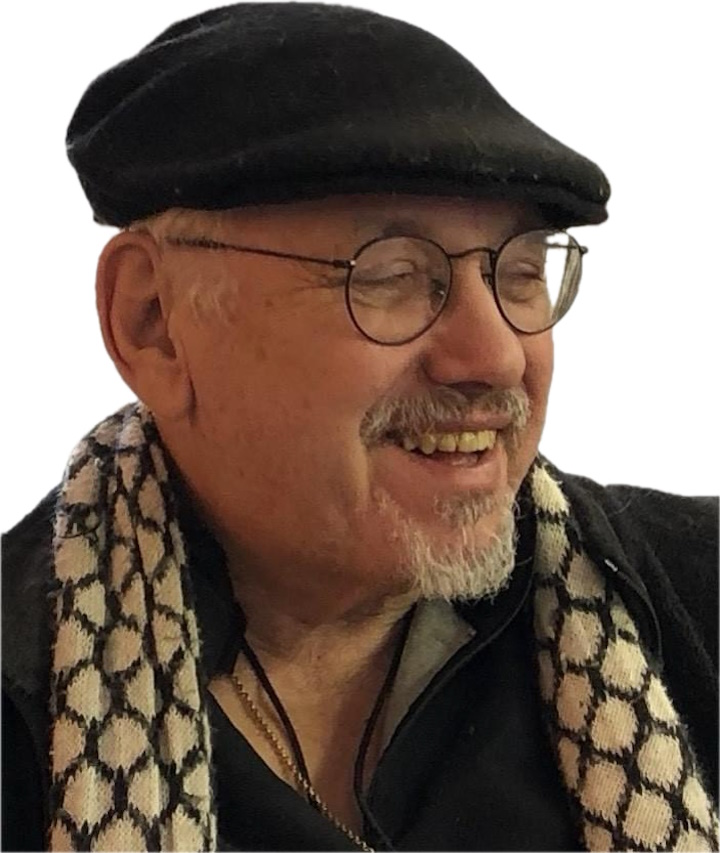Remembering John Hagedorn
Wide ranging political activist and strategist, professor and expert on gangs was 76.
John Hagedorn failed often.
The longtime Milwaukee activist and university professor was an anti-Vietnam war protestor and organizer in the 1960s and ‘70s who decided the movement had failed to achieve real change, and tried organizing workers in factories in Boston, also without much success. In the 1980s, he worked with Milwaukee activist and later government official Howard Fuller to get justice for Ernest Lacy, who had been killed by three Milwaukee police officers, but their effort to get then-Police Chief Harold Breier fired failed. The two also worked together on a failed campaign to elect a candidate for the Milwaukee School Board and on a mostly fruitless effort to completely overhaul the Milwaukee County health and human services department after Fuller became its director.
But even when he failed, Hagedorn had an impact on the people he worked with and the institutions he sought to change. There was a kind of Zelig-like quality to Hagedorn: he seemed to pop up every time there was a political protest or social activist movement.
“John was a phenomenal tactician,” Fuller recalls. “He knew how to organize people. And he knew tactics.”
And his energy and enthusiasm were irresistible, those who knew him say. “When he threw himself into a project, it was a mission,” says Paul Elitzik, a longtime adjunct professor and book publisher based in Chicago. His Lakeview Press imprint published the first two books written by Hagedorn after he successfully launched, in his 40’s, an entire second career as a Professor of Criminology, Law, and Justice at the University of Illinois-Chicago (UIC).
Hagedorn became an internationally known expert on street gangs, authoring four books on the subject, editing or coediting two others, along with writing some three dozen journal articles and book chapters, with his work receiving thousands of citations in the scholarship of others.
And even while commuting for decades to Chicago for his job, and attending international conferences on gangs, he continued to get involved in political protests in Milwaukee. He also had six children and 10 grandchildren from two marriages, one lasting 18 years and the second for 28 years until his death.
“He was always juggling a ton of balls,” says his widow Mary Devitt. “People would ask John ‘how are things?’ and he would answer ‘crazy!’ And it was always true.”
His all-consuming career was hard on the children, who wanted more from him as a father, Devitt says. “The kids adored him. But he wasn’t always there. We’re kind of coming to terms with that now.”
Hagedorn was born in Milwaukee, but at age four his family moved 140 miles north to Clintonville, where his father got a new job. But the family returned to Milwaukee nearly every weekend to visit extended family. John’s paternal grandfather maintained the family residence on Palmer Street, in what was becoming a poorer, mostly minority area, and John recalled regularly playing with Black kids in the neighborhood.
In 1967, at age 20, Hagedorn joined the open housing marches led by Father James Groppi, and was arrested and beaten by police, suffering a broken hand from a police nightstick.
The incident transformed his life: After a year-and-a-half attending UW-Milwaukee, Hagedorn dropped out and began working for the Milwaukee Organizing Committee, a radical grassroots organization involved in the antiwar and civil rights movements. In the summer of 1968, at age 21, he provided organizational assistance for the Milwaukee Fourteen, who burned and destroyed 10,000 Selective Service records in protest of the war. All 14 were given prison sentences. Hagedorn was indicted on two felony counts of federal conspiracy charges to which he pled guilty and was sentenced to probation.
Hagedorn spent the next five years working on many causes, including for the National Welfare Rights Organization. In 1974, he left Milwaukee for Boston, where he spent five years as a labor and community organizer. He returned to Milwaukee in 1980, where he worked on a successful effort pushed by Fuller to block a plan to turn North Division into a specialty school, with Fuller arguing the school should prioritize neighborhood kids. Next Hagedorn helped Fuller plan tactics for the protests of Ernest Lacy’s killing, which resulted in the firing of one officer and the demotion of four others. It also led to the state Legislature’s passage of the Lacy Law, which made it illegal for police officers to fail to render aid, and becomes a felony if this results in someone’s death.
Around this time Hagedorn took a job as an organizer with the Sherman Park Community Association, followed by a job as director of a youth gang diversion program overseen by the Social Development Commission, then the city’s major anti-poverty organization. Hagedorn worked closely with Milwaukee’s street gangs, building relationships with its members.
Meanwhile, he had returned to UWM that year to finish his bachelor’s degree. There he met Joan Moore, an acclaimed sociology professor, who became his mentor and worked with him to get funding for a study of gang life in Milwaukee. This led to Hagedorn later writing a master thesis on gangs, called People and Folks, which became his first published book, in 1988.
His involvement in academia was interrupted for more than two years when he went to work for Fuller at Milwaukee County. As Hagedorn recalled it, the bureaucracy hated his efforts at reform and his job was eventually eliminated. Hagedorn went back to UWM to work on his PhD and his thesis, based on his experience at the county, was called Forsaking Our Children: Bureaucracy and Reform in the Child Welfare System, and also became a book published by Lakeview Press in 1995. One year later he was hired as a professor by UIC.
Hagedorn was not your usual academic: he was not a data or numbers cruncher. His slogan was “research not stereotypes,” notes Elitzik.
“He championed research where you listen to people themselves, to the voices of ordinary people,” says Bill Ayers, a retired UIC education teacher who often brought Hagedorn in as a guest speaker. “Students were kind of astonished that this scholar and academic had real stories of lives on the streets.”
Among Hagedorn’s other books was Female Gangs in America: Essays on Girls, Gangs and Gender, which he co-edited and was the first book ever written on female gangs. (Devitt, who met Hagedorn while working as a PhD student at UWM, contributed to the book.) As Hagedorn’s reputation grew, he was traveling and making connections via courses, conferences, and research initiatives across the world — in Belfast, Pretoria, Oslo, London, Rio de Janeiro, Frankfurt, Mombasa, Copenhagen and Glasgow. This led him to publish Gangs in the Global City: Alternatives to Traditional Criminology in 2007), a book he edited and to which he contributed two chapters. This was followed by his 2008 book, A World of Gangs: Armed Young Men and Gangsta Culture, which looked at U.S. gang culture from a global perspective.
All of which informed Hagedorn’s teaching at UIC. “He was an excellent teacher,” Ayres says. “He had a unique way of talking about his research and the human beings he worked with on the streets. He was a hugely popular instructor. And part of that was a willingness to listen to his students and learn from them.” A number of the gang members he met were inspired by him to go to college; some became his PhD students.
In later years Hagedorn worked as an expert witness in trials of gang members, attempting to dispel stereotypes and provide a human perspective when judges were sentencing gang members. He was working for defense attorneys, which most professors avoided. That led to his last book, in 2022, Gangs on Trial: Challenging Stereotypes and Demonization in the Courts.
“John wasn’t ambitious in the way a lot people in the academic world are,” Elitzik notes. “He could have made a lot more money doing the usual research on gangs. That’s where the real money was, coming from law enforcement for research supporting the way policy was conventionally done.”
Hagedorn passed away on October 31, after a long struggle with cancer, with Devitt as his caretaker, assisted mainly by two of his sons. The Great Cities Institute in Chicago published a story about his work and later held a public celebration of his life. “There was a lot of testimony by his grad students. At least half of them were in tears,” Ayers says. “John Hagedorn was still living in all the people in the room.”
A memorial for Hagedorn will be held on Saturday, January 6, 11:30 a.m., at the First Unitarian Society of Milwaukee, 1342 N. Astor St. You can find more details in this obituary.
If you think stories like this are important, become a member of Urban Milwaukee and help support real, independent journalism. Plus you get some cool added benefits.
Murphy's Law
-
Milwaukee Artist Resource Network Faces Financial Cliff
 Feb 26th, 2025 by Bruce Murphy
Feb 26th, 2025 by Bruce Murphy
-
Musk Wants to Buy Wisconsin Justice?
 Feb 24th, 2025 by Bruce Murphy
Feb 24th, 2025 by Bruce Murphy
-
Evers Offers a Reelection Budget
 Feb 19th, 2025 by Bruce Murphy
Feb 19th, 2025 by Bruce Murphy























1966 was the time when people my age, 19, were being drafted in growing numbers. Having a pregnant girl friend, I was in need of information and assistance. It was recommended that I see John for assistance. We met at UW-M and the advice that he provided was appreciated and helpful. Rest in peace.
A fine tribute, Bruce. I moved to Milwaukee in 1969 to fulfill my obligations to a religious order after I had “lost the calling”. I worked at St. Charles Boys Home for that summer. I decided to stay in Milwaukee and get active in the anti-war movement. One of the first issues I had to confront was the draft, and John was my draft counselor. He also introduced me to the broader anti-war movement in Milwaukee. He trained me to be a draft counselor which I did for a year or two. The Milwaukee Area Draft Information Center was in the back of the Rhubarb bookstore on Wells near the Marquette campus.